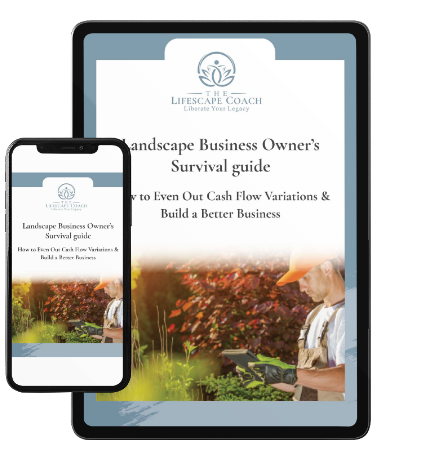Need Help Setting The Right Labor Price? Start By Understanding Your Labor Costs
Setting the right labor rates for your landscaping business can be daunting. Doing it correctly means weighing a number of factors, researching labor trends in the industry, and finding the right tools and resources to support the rate-setting process. Not only that, you must be willing to engage with this process over and over again as your business and industry trends change over time.
When it comes to setting labor rates, there can be no such thing as a “set it and forget it” mentality. Owners who don’t revisit their labor rates frequently end up making less money. Not only that, they often lose strong employees to the competition.
So, how can you approach setting labor rates the right way and avoid these issues? Start by taking the following steps:
NOTE: Our goal here is NOT to teach you precisely how to set your rates. We want to help you understand the major factors that go into setting those rates so you can find what works best for your business. You can’t copy what your competitors are doing, and you definitely can’t make up numbers out of thin air. Follow the steps below to arrive at appropriate labor rates for your landscaping business.

-
Know the Minimum Wage In Your State
This is the most basic piece of information to have and will guide how you price your labor at all levels. Be aware not only of the current minimum wage, but any pending or passed legislation in your state that has the minimum wage set to increase on a specific timeline.
-
Know Your Industry Rates
GetJobber.com has this helpful salary guide to give you a sense of where landscape industry rates are currently.
There is some discussion about whether rates in 2023 reflect an industry “bubble” and should be lowered. Our professional opinion is that rather than lowering rates, it’s generally better to hold off on raising rates and commit to providing excellent service at that price point. You might consider taking your company “hyper local” and focusing on the clients who are closest to you. That way, you can commit to a high level of customer service.
-
Know the True Cost of Your Employees
The true cost of an employee isn’t only about their wages. You must factor in all the expenses associated with retaining an employee. This includes the benefits you’re providing to that employee–everything from health insurance and paid time off, to education and training, to tools and uniforms. Intuit (Quickbooks) has a resource to help business owners ballpark these costs. Additional paid resources and tools can also be found.
-
If You Need Help Understanding the Tools, Ask for It
Not every tool you come across will feel intuitive to you. If you don’t feel equipped to make use of them on your own, it is important to speak with an accountant or financial consultant so you can take full advantage of what’s out there. The additional cost is worthwhile in terms of saving lots of time and aggravation.
-
Don’t Forget Your Labor Burden Rate
In addition to the elements listed under #3, you must also factor in your overhead costs and, of course, your profit margin. Adding all of these factors together, then dividing by the number of hours your employee works, will get you to their billable rate. This labor burden rate calculator will help with this process.
-
Understand that Markets Change
What happens to a business who sets its rates, lets years go by, and absorbs rising costs? Simple: it makes less money. Raising rates may feel scary, but your approach doesn’t have to be all-or-nothing. For example, consider if you want to raise rates on current clients, or only new clients. You might also think about raising rates for those clients whose properties are most difficult to service in an effort to compensate for that extra time. Raising rates across the board may or may not end up being the best approach, so consider your client base when you make the decision. You will have to discern what feels most justified in your current business context.

It can certainly be anxiety-provoking to set what might feel to you like high labor rates, and to wonder if it will cost you business. A shift in mindset is needed here. Instead of worrying that you are costing the client a lot of money, focus on the fact that setting the right price point will allow you to pay your staff well, which in turn helps them to feel supported, happy, and psychologically safe at work. The end result of this should be that you end up with a better team doing better work in less time. This is not only good for you, it is great for your clients.
If you as the owner can get over the fear of setting a “high” rate, and instead internalize the idea that your rate is well-aligned with your costs and desired profit, everyone–including your staff and your clients–will be better off.
Landscape Business Owners Survival Guide



